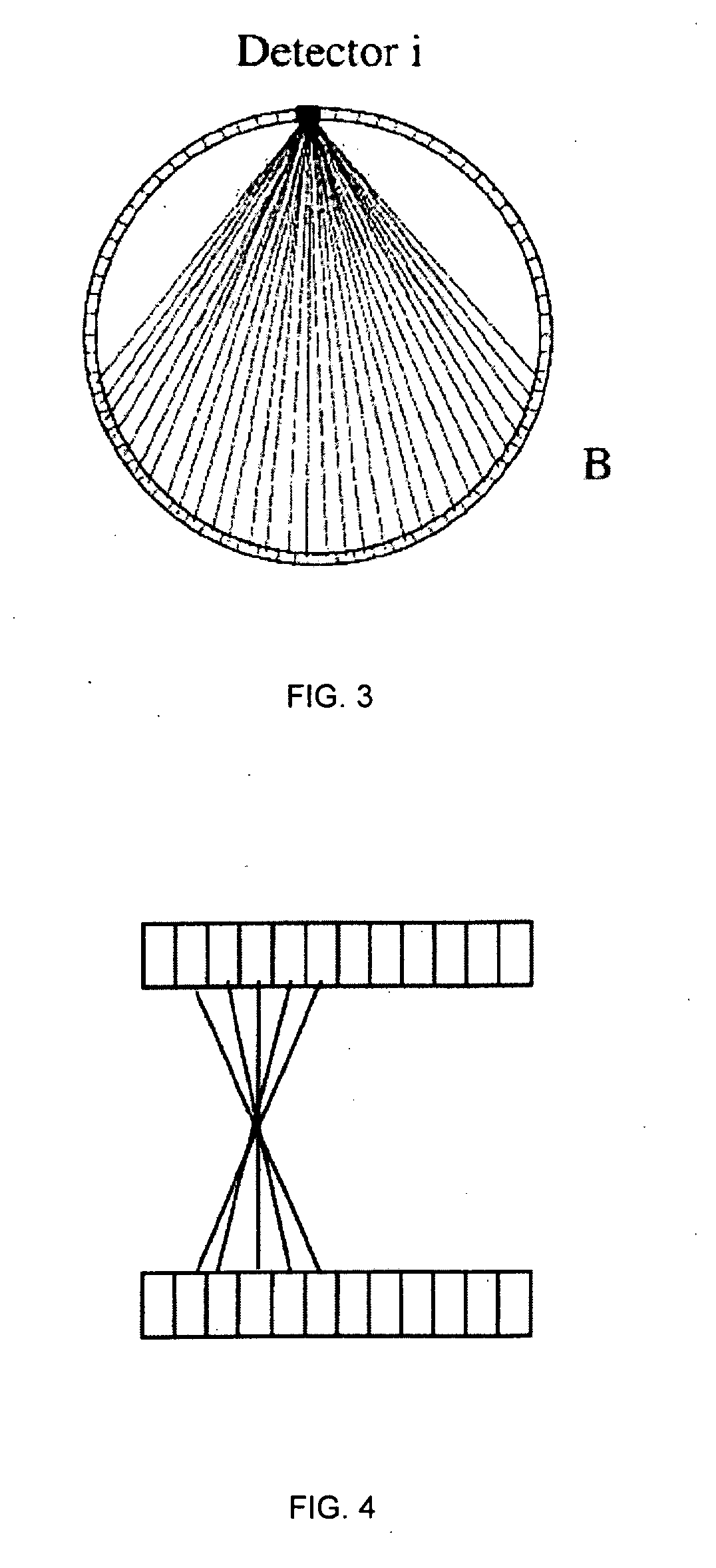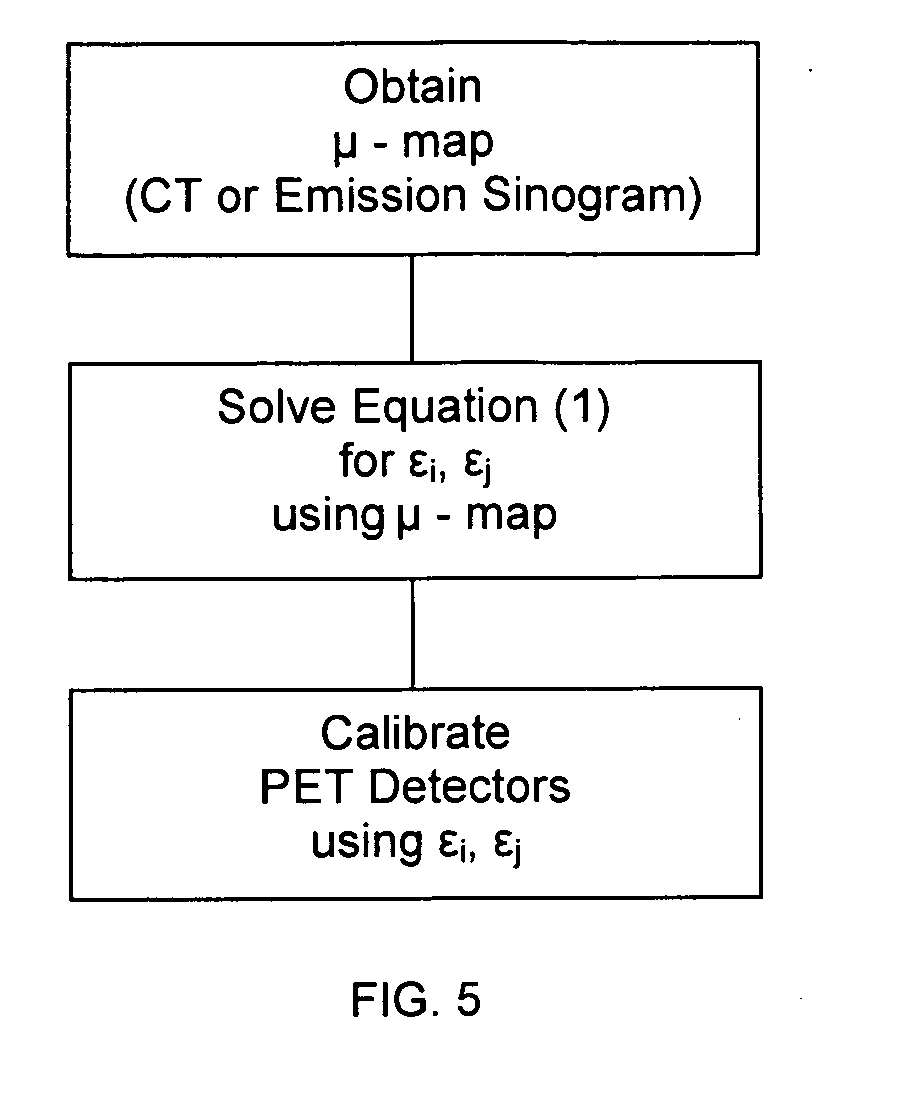Estimation of Crystal Efficiency With Axially Compressed Sinogram
a sinogram and crystal efficiency technology, applied in tomography, calibration apparatus, instruments, etc., can solve the problems of inaccuracy of crystal efficiency knowledge, poor uniformity of reconstructed image, and higher noise in imag
- Summary
- Abstract
- Description
- Claims
- Application Information
AI Technical Summary
Benefits of technology
Problems solved by technology
Method used
Image
Examples
Embodiment Construction
[0022]The present invention enables one to accurately model the contribution to the sinogram bins from each line of response (LOR). To do so, the method utilizes an attenuation correction file generated either from a CT scan or mathematically from an emission sinogram generated using a phantom and iteratively estimates individual crystal efficiency.
[0023]The fan-sum method is applied on acquired uniform cylinder sinogram to estimate the crystal efficiency of each detector. LORs connecting one crystal i to the opposing group of crystals B are summed together to compute the efficiency of the crystal i, as illustrated in FIG. 3. Thus, in 3D acquisition mode with axial compression, each slice of the sinogram will be the sum of multiple axial lines of response, as illustrated in FIG. 4.
[0024]In the case where all crystal detectors have approximately the same efficiencies, acceptable accuracy can be achieved by ignoring the axial compression and assuming the direct planes are coincidences...
PUM
 Login to View More
Login to View More Abstract
Description
Claims
Application Information
 Login to View More
Login to View More - R&D
- Intellectual Property
- Life Sciences
- Materials
- Tech Scout
- Unparalleled Data Quality
- Higher Quality Content
- 60% Fewer Hallucinations
Browse by: Latest US Patents, China's latest patents, Technical Efficacy Thesaurus, Application Domain, Technology Topic, Popular Technical Reports.
© 2025 PatSnap. All rights reserved.Legal|Privacy policy|Modern Slavery Act Transparency Statement|Sitemap|About US| Contact US: help@patsnap.com



